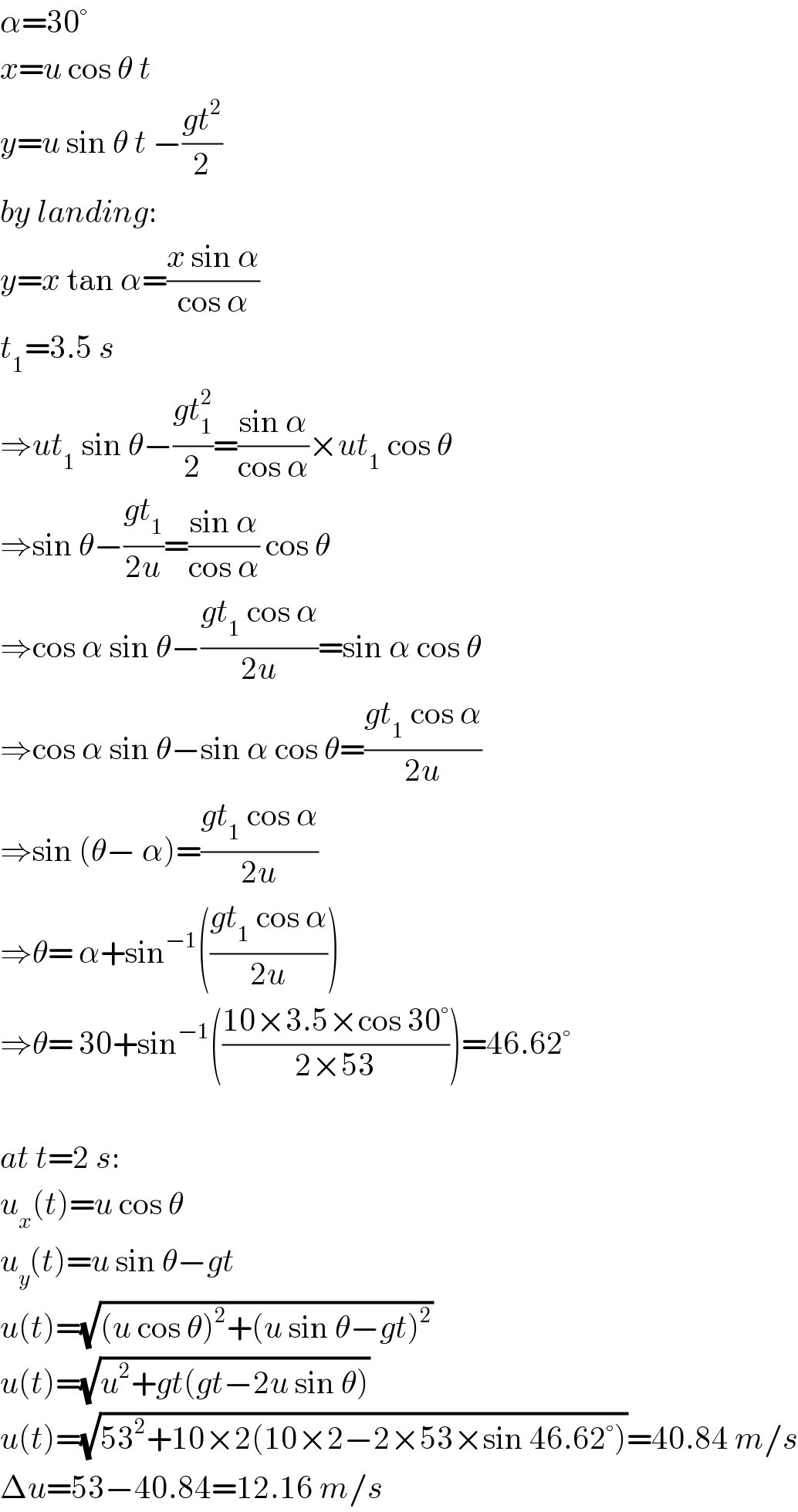
Question and Answers Forum
Question Number 27044 by Tinkutara last updated on 01/Jan/18

Answered by mrW1 last updated on 02/Jan/18

Commented by mrW1 last updated on 03/Jan/18

Commented by Tinkutara last updated on 03/Jan/18
Yes answer given is 20 m/s. Thank you very much Sir! I got the answer.
